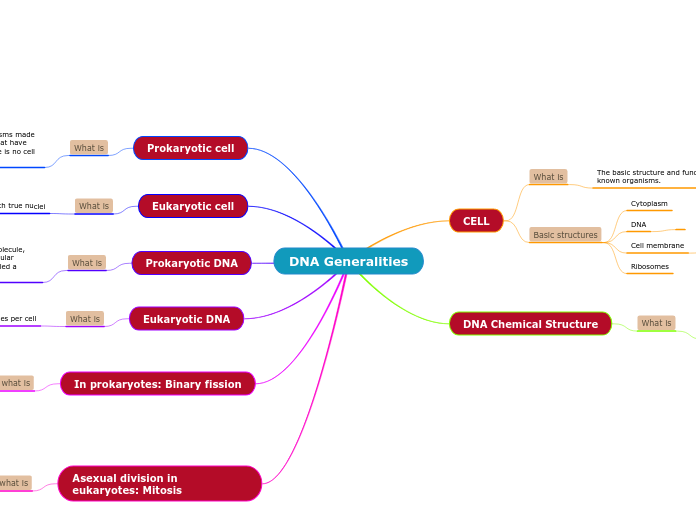DNA Generalities
CELL
What is
The basic structure and functional units of all known organisms.
Basic structures
Cytoplasm
DNA
Cell membrane
Ribosomes
DNA Chemical Structure
What is
DNA has a central part with a sugar and a phosphate, to which molecules called bases bind.
These bases can be of 4 types:
Adenine
cytosine
thymine
guanine
Prokaryotic cell
What is
The domain that includes microorganisms made up of prokaryotic cells, that is, cells that have free DNA in the cytoplasm, since there is no cell nucleus.
Eukaryotic cell
What is
organisms formed by cells with true nuclei
Prokaryotic DNA
What is
In prokaryotic cells, DNA is a single molecule, usually a double-stranded (closed) circular molecule, located in a cell segment called a nucleoside.
Eukaryotic DNA
What is
organisms have many DNA molecules per cell
In prokaryotes: Binary fission
what is
Binary fission is a form of asexual reproduction that occurs in archaea and bacteria. It consists of DNA replication, followed by cytokinesis (cytokinesis), resulting in two daughter cells. Bacterial DNA has a high mutation rate.
Asexual division in eukaryotes: Mitosis
what is
In sexually reproducing organisms, in addition to mitosis, a type of cell division called meiosis also occurs. In the latter, the four daughter cells are derived from stem cells and each daughter cell has half the genetic content of the cell from which they are derived.
